Greubel Forsey
In Depth: Greubel Forsey Double Balancier Convexe SHH Edition
Their watches are the result of taking all aspects of watchmaking to their summit, where scientific solutions, movement design and architecture, and the highest level of finishing are woven together in a manner that exists nowhere else. These qualities became all the more pronounced, ironically, when the brand began delving into the highly crowded luxury-lifestyle sports watch segment in 2019. By marrying highly sophisticated, three-dimensional movements that were finished to an unbelievable degree with ergonomic, 100m water-resistant curved titanium cases, the Convexe series seemed almost like a reaction against the genre’s narrow, exterior-led nature where movement architecture, cosmetic decoration and less saleable characteristics such as pragmatic superiority in timekeeping take a backseat.
Limited to six pieces, the Greubel Forsey Double Balancier Convexe SHH edition is a striking take on the brand’s most mechanically exotic hyper watch. It comes in an unexpected purple hue, which enhances its dynamic character as a sports watch while lending emphasis to one of the brand’s most intriguing movements. The baseplate, seconds subdial as well as hour and minute tips are all rendered in an intense purple, along with a matching purple rubber strap. But for those who might find the color a tad daunting, the effect can be dialed back with an accompanying black or translucent rubber strap.
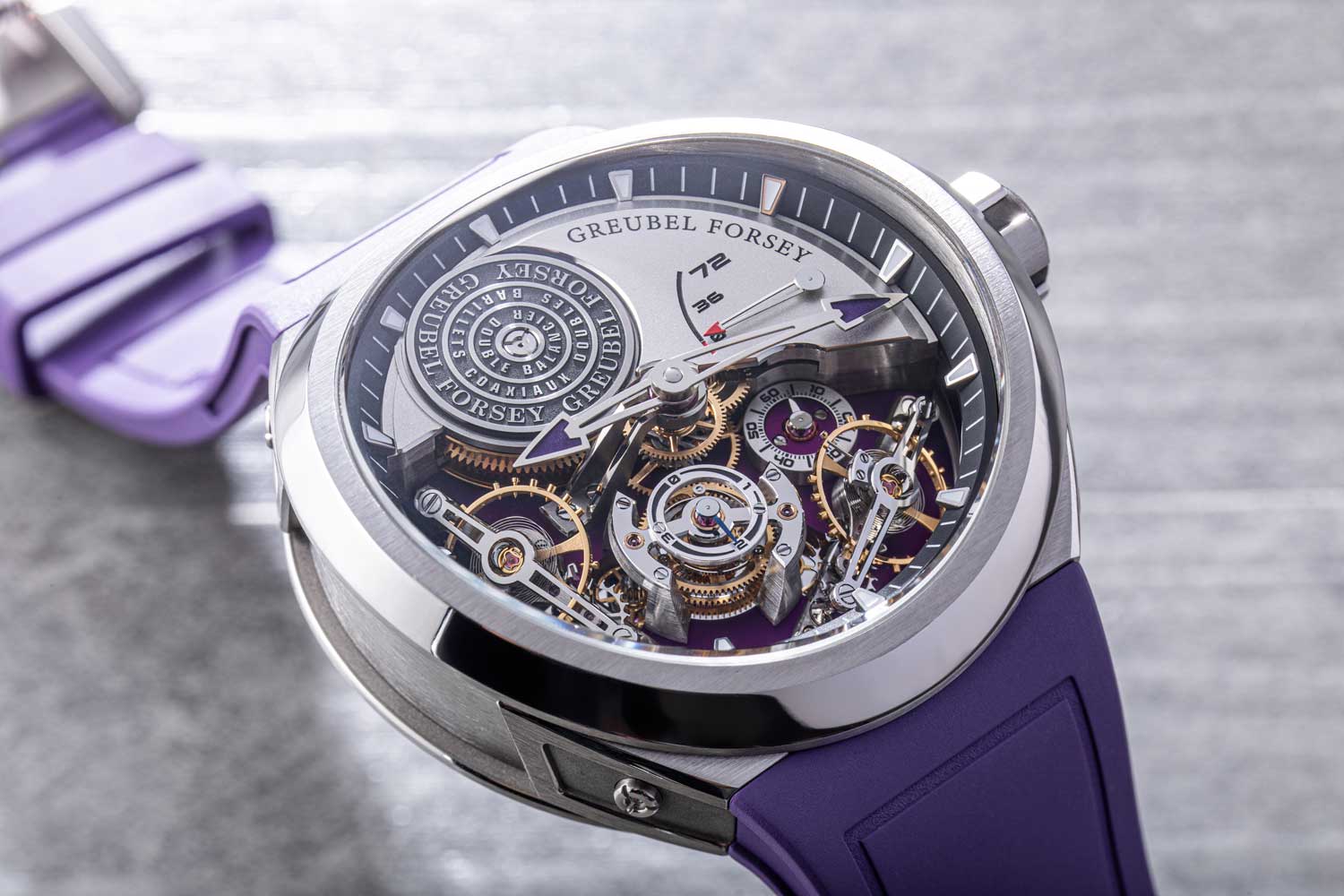
Greubel Forsey Double Balancier Convexe SHH Edition (Image: Revolution©)
Superb Construction
Characterized by a convex profile, the unique case first made its debut in the GMT Sport in 2019 before spawning an entire Convexe range. While Greubel Forsey watches have always been about exercising an obsessional bent on every field of watchmaking — construction, chronometry and craft — they tended to fly outside the radar of the mainstream enthusiast, as their dimensions, weight and asymmetrical bulges can be somewhat alienating. But with the introduction of ergonomic Convexe titanium cases, their watches now feel more plausible as a frequent companion on the wrist.
When observed from above, the case appears perfectly round, but in actual fact, it has a tonneau shape with an oval bezel that is curved vertically from 12 to six o’clock. To accommodate the curvature of the case, the crystal is also curved, which further highlights the architectural depth of the movement. The circumference of the bezel extends slightly outward from the case toward the integrated strap, allowing an expansive view of the impressively intricate components in the movement. As such, the watch appears a lot larger than it wears — 46.5mm wide at its bezel with a base diameter of just 43.5mm. It is also a lot slimmer than its architecture — comprising inclined balances, stacked barrels and differential gears — might suggest. While it is far from offering the same physical elegance as a Dufour Duality, its height of 13.75mm is a testament to Greubel Forsey’s expertise in creating immense depth in a movement. As a reference, it has almost the same thickness as a Breitling B01 chronograph (13.6mm) and is substantially thinner than a Tudor Black Bay Chrono (14.4mm). Additionally, its curved, ergonomic case and the lightness of titanium make it all the more wearable.
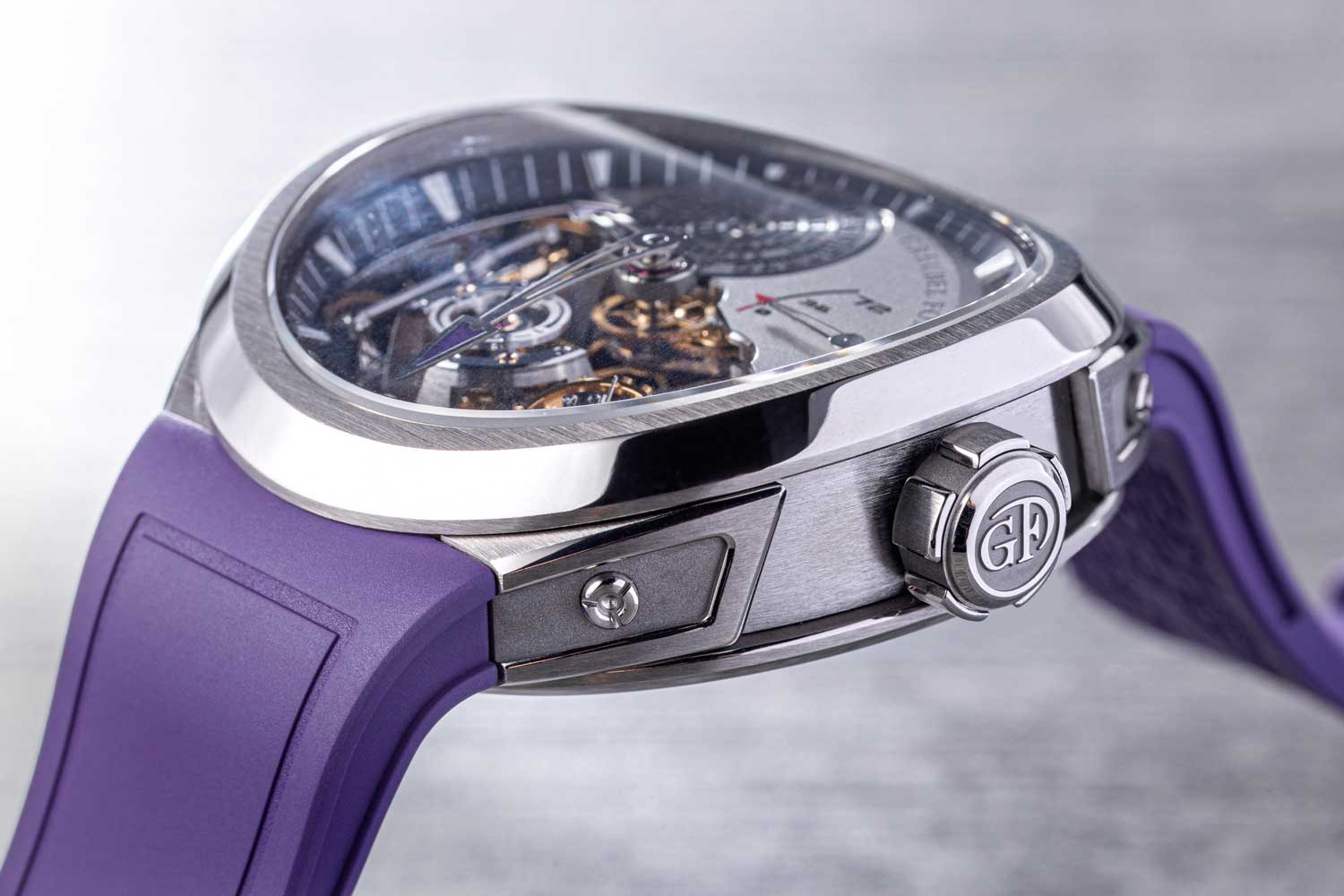
The curved bezel extends from the case slightly, allowing an expansive view of the impressively intricate components (Image: Revolution©)
To maximize visual depth, the dial has been diagonally openworked to showcase the underlying mechanisms against a purple titanium baseplate. Decorated with a fine and elegant frosted finish, the dial features a linear power-reserve indicator two o’clock while a pair of stacked, co-axial mainspring barrels sit under a relief-engraved barrel cover at 10 o’clock. The barrels rotate twice as fast as a regular barrel, making one revolution in 3.2 hours. Notably, the first barrel contains a manual mainspring, but the second is fitted with an automatic mainspring. Once the first barrel is fully wound, the second starts winding before it slips to prevent damage from overwinding.
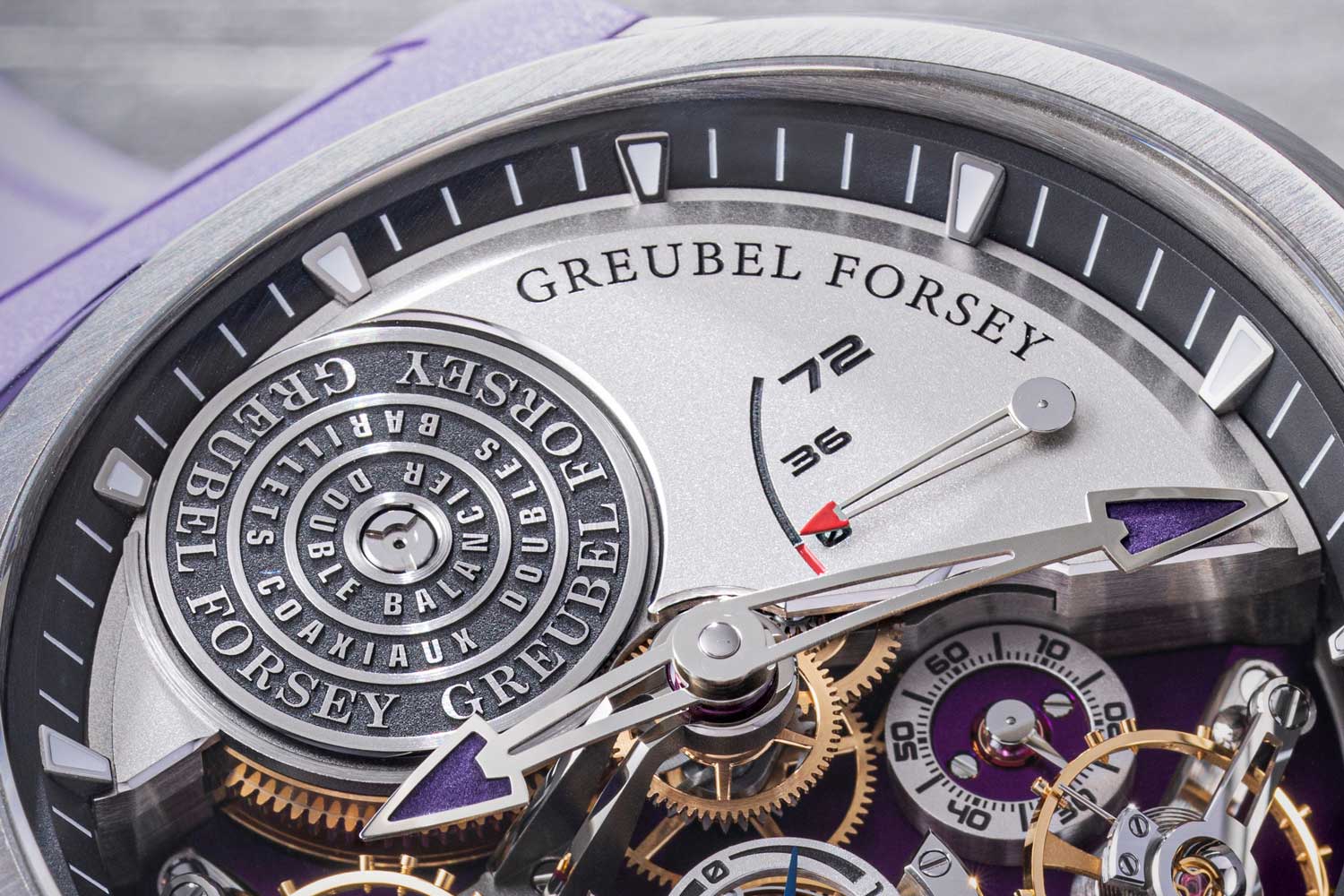
The diagonally oriented dial has a fine, frosted finish with an exposed barrel cover that has been engraved in relief (Image: Revolution©)
Save for the power-reserve differential and the auxiliary wheels that drive the purple small seconds indicator, the entire gear train can be traced on the dial. Right below the center wheel is where all the magic takes place. Two balance wheels mounted at a 30° tilt are coupled by a spherical differential in the middle that averages their variations in rate, so that each balance wheel compensates for any timing error produced by the other’s position.
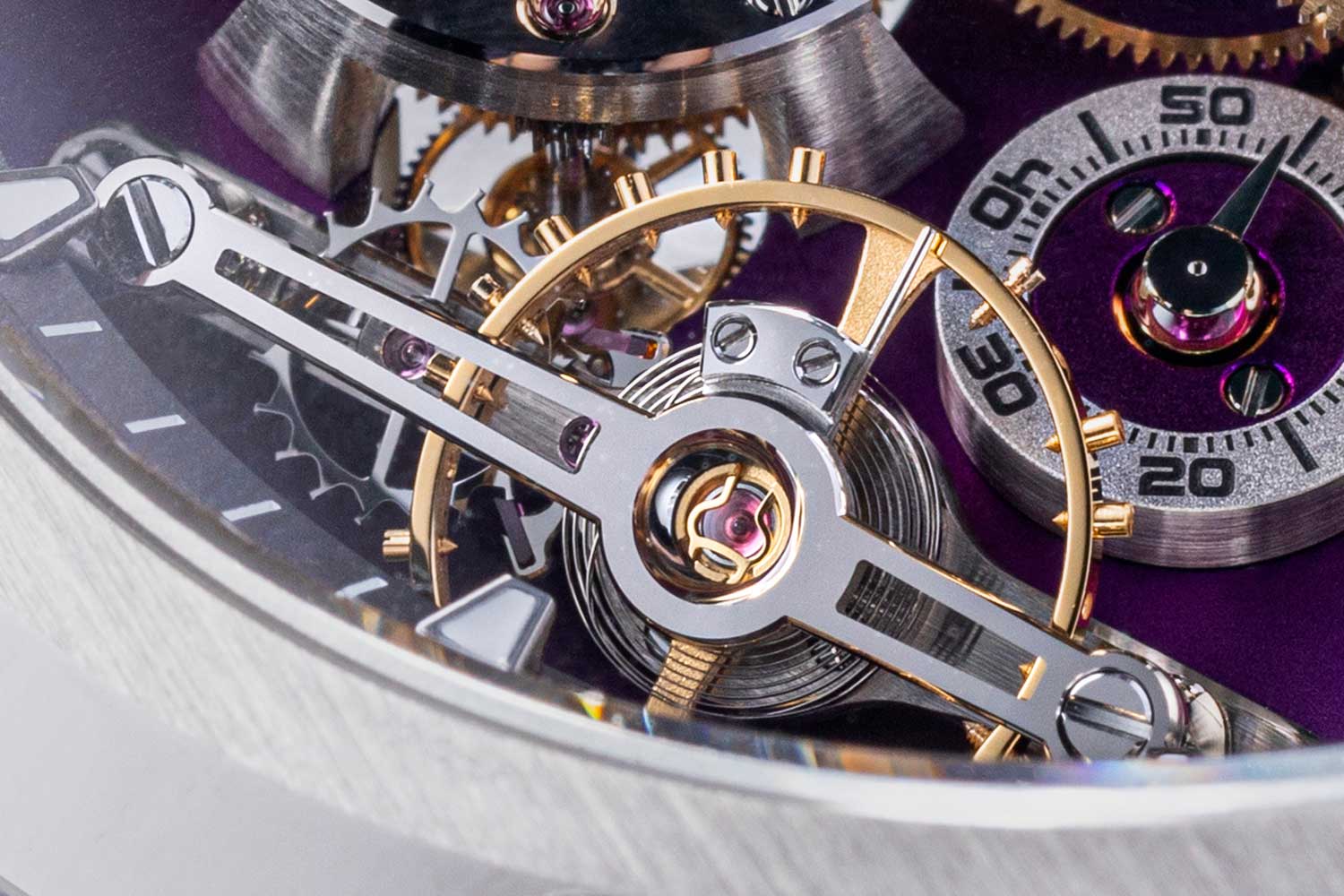
With the balance wheel inclined at a 30° angle, it avoids the full downward pull of gravity in either position (Image: Revolution©)
Double Inclined Balances
It is worth looking at the wider context from which these chronometric mechanisms emerged. After the ascendence of the quartz watch, mastering the tourbillon became somewhat of a rite of passage for every watchmaker as it was compelling reminder of a time when precision was the name of the game while being an exercise in pageantry and complexity on its own.
But seeing as how the tourbillon had undergone the least successful adaptation to the wrist, having been invented to compensate for errors in the vertical position in which pocket watches spend most of their life, Greubel Forsey held a more noble conviction to preserve its relevance in a wristwatch. This led to the development of inclined tourbillons. By mounting the tourbillon at an angle less than 90°, the balance could avoid the most extreme gravitational effects in both the horizontal and vertical positions, while being able to keep the thickness of the movement within the realm of reason.
This invention opened up myriad other possibilities, such as increasing the rate of the cage to one rotation every 24 seconds, doubling its axis or installing a second tourbillon on the opposite side of the dial as a safety net with a differential in the middle to further average out their errors in rate.
The basis for an inclined balance in a non-tourbillon watch arises from the same principle. When the balance is neither on the horizontal or vertical plane, it does not experience the full downward pull of gravity regardless of the watch’s position, resulting in less variation in rate. At the same time, a fairly large balance can be used, maintaining sufficient inertia while keeping the case height in check.
In the Double Balancier, two balance wheels are inclined at an angle with respect to gravity as well as to each other, so that the positional errors experienced by one balance in any given position are compensated by those in the other via the differential. Driven by the center wheel of the movement, the differential has a lateral construction made up of three co-axial wheels in which the top and bottom wheels drive the pinion of the fourth wheels on its right and left.
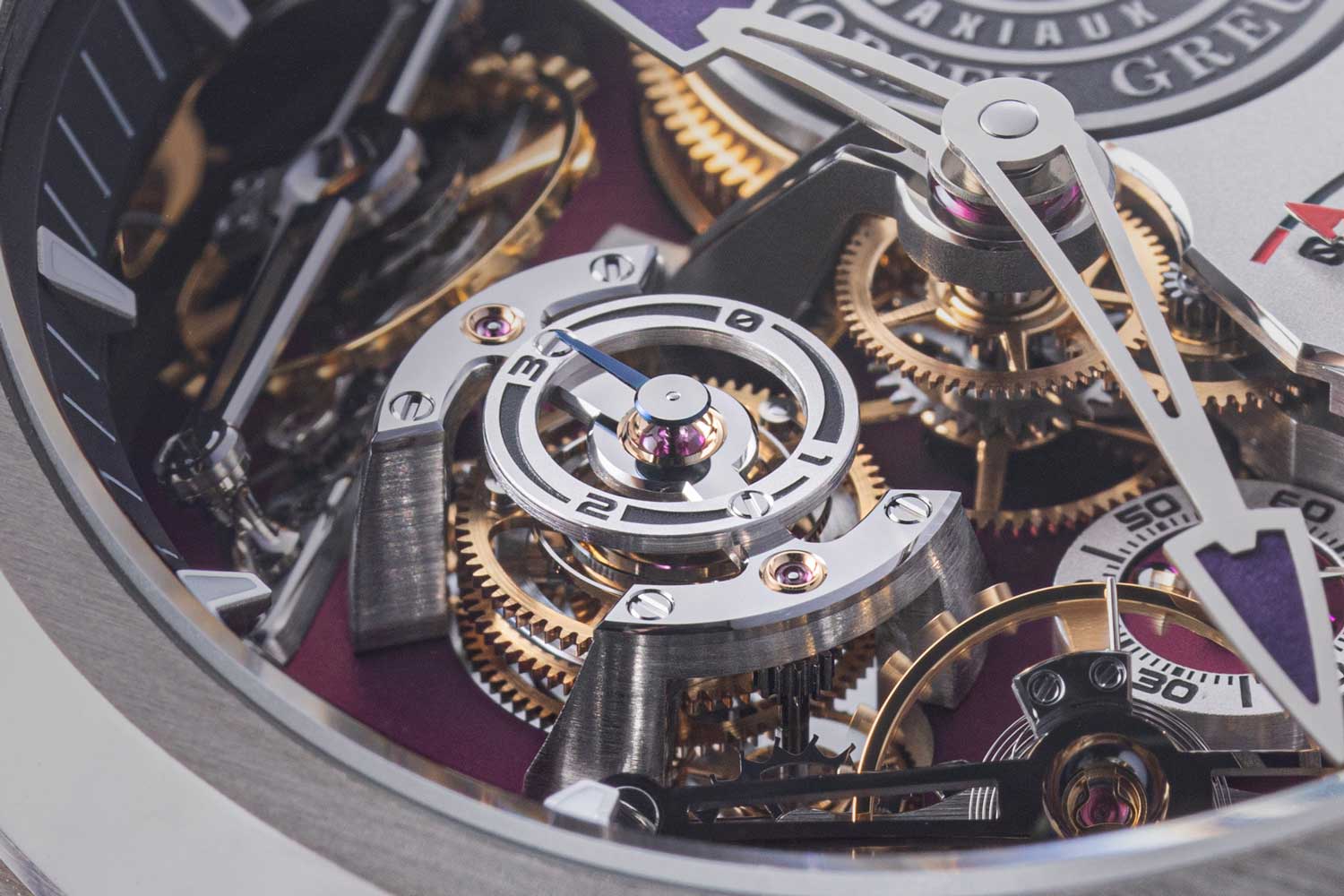
The differential is made up of three co-axial wheels with a pair of tension springs pinned to the top and bottom wheels (Image: Revolution©)
By having a secondary source and store of power, the amplitude of the balance wheel will remain unaffected by torque fluctuations as the mainspring winds down. The middle wheel in the differential then transmits the equalized force to the center wheel, which carries the hands as well as drives the purple seconds indicator via an auxiliary train. The balances are free-sprung and brought to time with screws affixed to the balance rims. Each balance is also equipped with a Breguet overcoil hairspring.
Fantastic Finishing
In true Greubel Forsey fashion, the mechanical achievement in the watch is lifted to a form of art where the layout of the components and their fully dimensional bridges, their relationship to each other and how they convey depth, are simply exceptional. Beyond that, there’s also the pursuit of beauty in terms of finishing where no component is too small or mundane to receive a surface finish. In fact, so singular is Greubel Forsey’s expertise that it is hard to think of another watchmaker who is able to integrate scientific engineering, movement design and architecture, and the effects of finishing as well as Greubel Forsey.
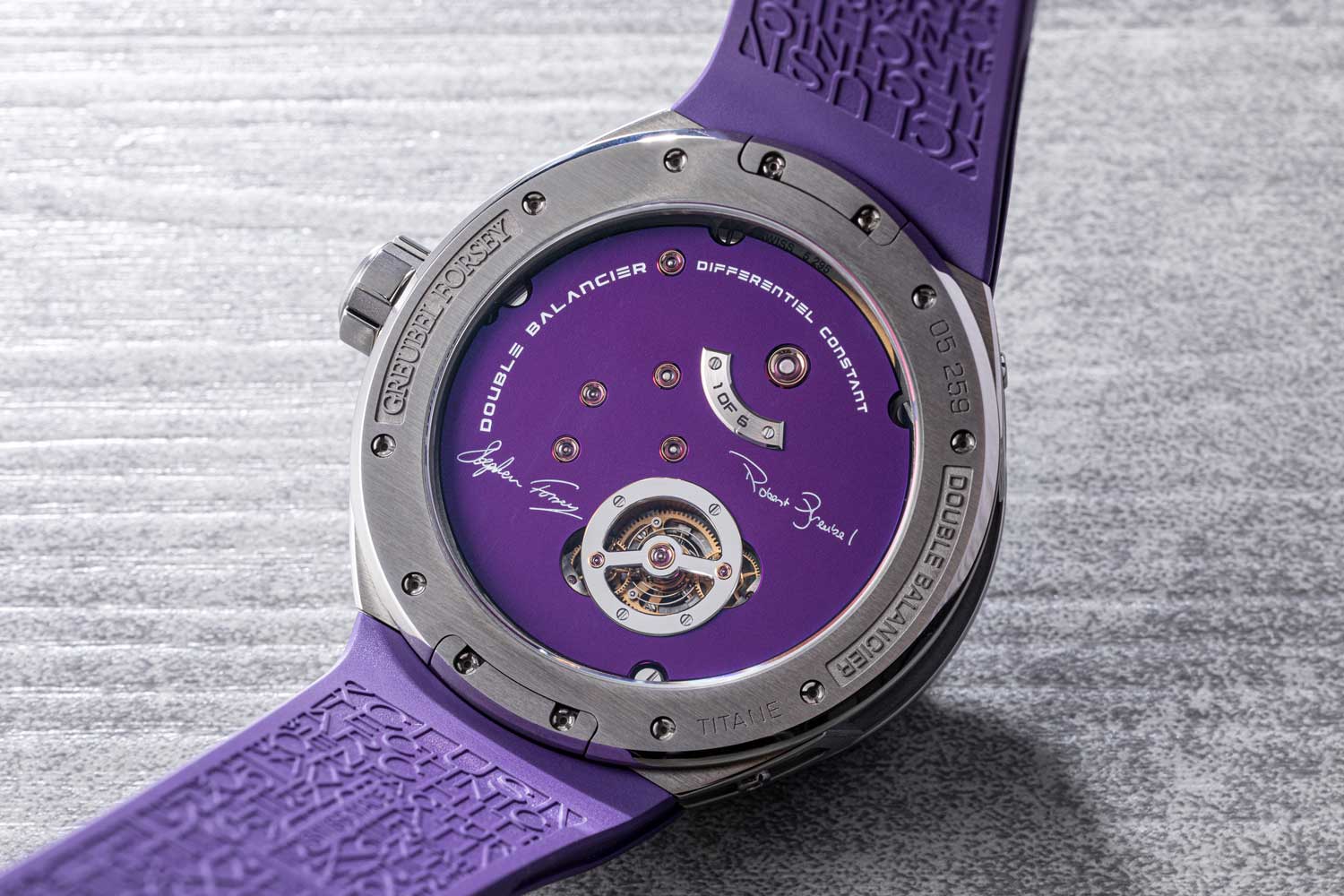
The case back is inscribed with the personal signatures of Robert Greubel and Stephen Forsey (Image: Revolution©)
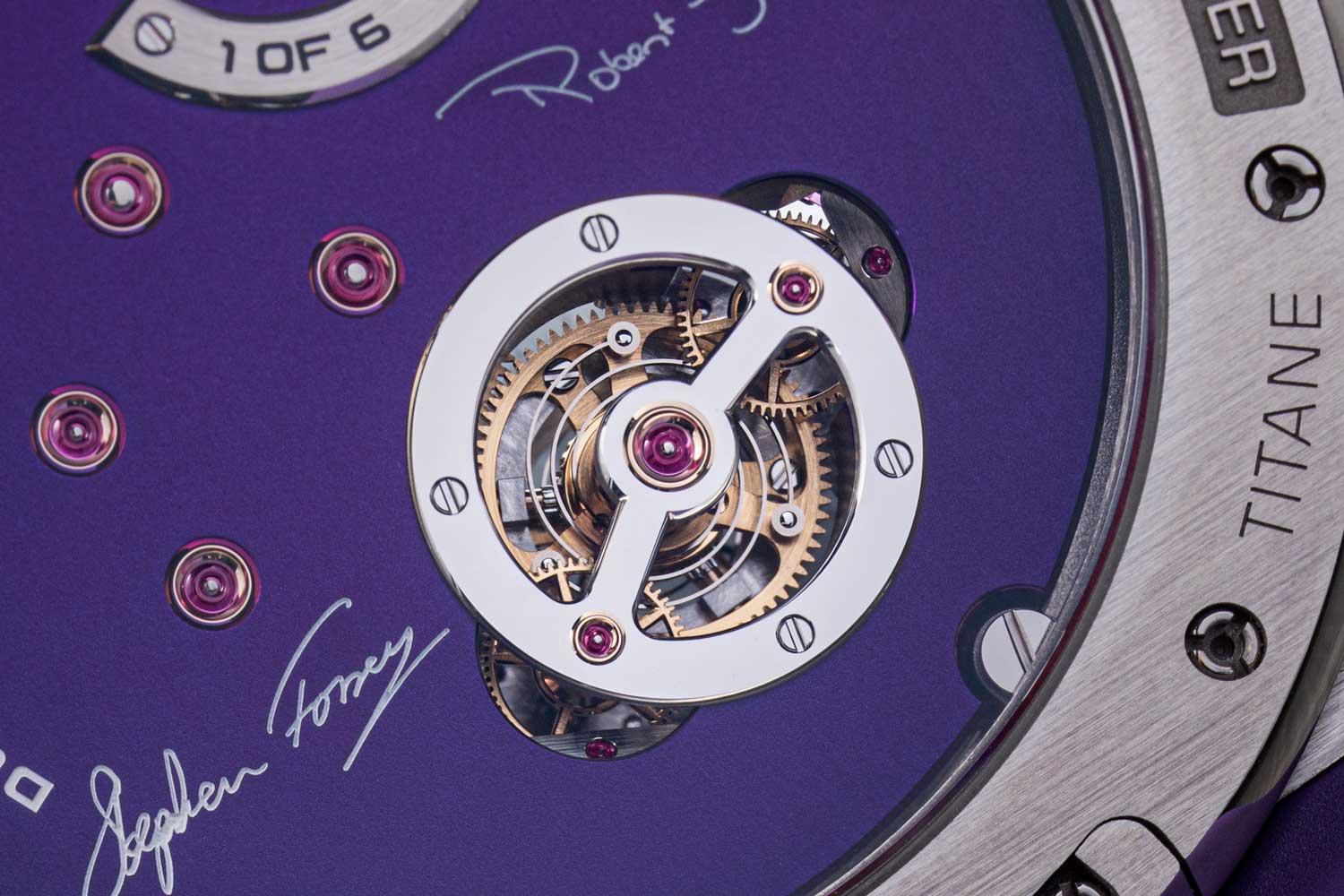
The remontoir spring pinned to the spokes of the differential gear provides constant tension to each of the wheels (Image: Revolution©)
The Greubel Forsey Double Balancier Convexe SHH Edition is priced at SGD 505,580 (including GST) and limited to six pieces.
The new SHH flagship boutique is located at unit #B2M-202 at The Shoppes at Marina Bay Sands.










